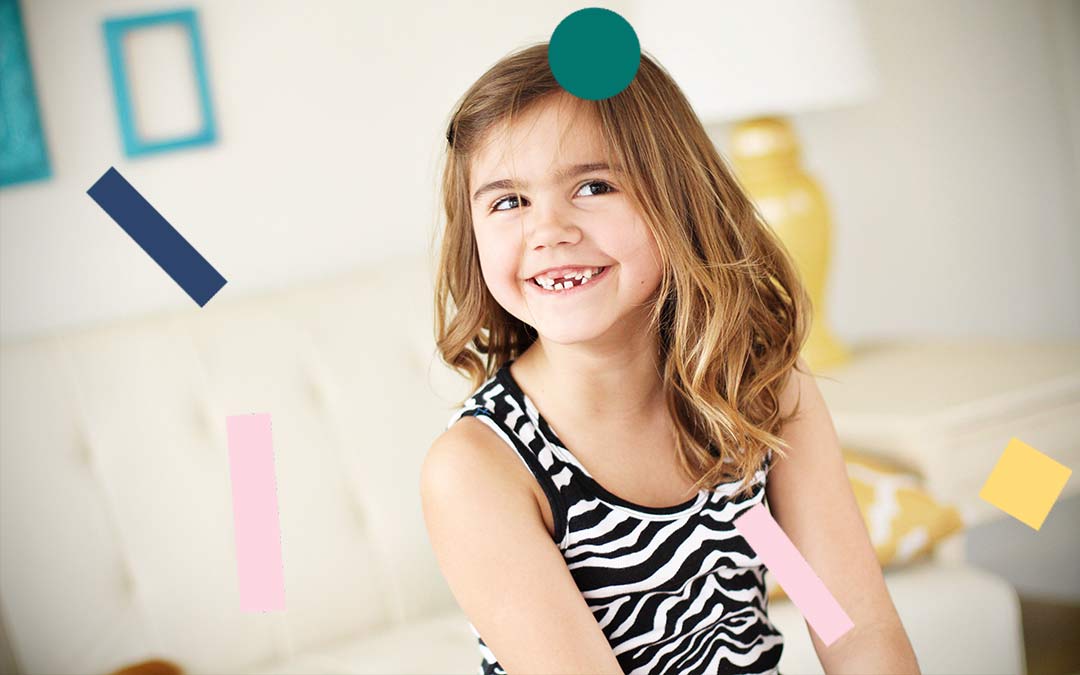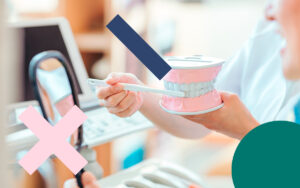Author: Ms Susan Johnston Registered Dental Hygienist, Sligo, Ireland.
Every moment is an experience
Soon after my daughter’s sixth birthday, she lost her sixth baby tooth. Is it just me or are children loosing their baby teeth earlier than when we were young? The day she lost her first baby tooth, she was only four and a half years old. Her Dental Hygienist mum probably cried more than she did. It was partly because she was no longer my baby but growing up into this little girl who was so courageous and bright, so much more than her mum was many years ago at her age.
When my daughter was born, she had a short stay in neonatal. With many tests having to be carried out, the nursing staff introduced her to a soother. My girl absolutely loved her soother and we struggled over the early years to part her from it. At age one, we lessened the time she had with it to bedtime only. Once all her baby teeth had erupted, I was concerned that the soother would cause movement to her teeth. Sleep was still an ongoing issue at the time and for an easy life reluctantly agreed to let her continue to have it while we got over this phase.
Once I set my mind to it, I was determined the time was right to get rid of the soother. She was starting preschool and was age three. Her teeth had started to move slightly and this pushed me to act quickly. I prepared her well and talked her through what would happen. That day we hung the soother on a tree for the tooth fairy to take away that night. That weekend, she had no problem letting go of her soother as she saw herself as a big girl then, but it was only that night at bedtime she missed it terribly.
We left a comfort blanket with her to feel and her favourite teddy. We made it through the night! Leaving her at bedtime was the hardest to deal with, but after a couple of nights, it did get easier and she had gotten past the need to suck endlessly on her soother. To my relief, I now wish I had attempted it sooner. We talk about it now and she remembers her soother but not the night she had to get through without it.
If your baby needs a soother, there are orthodontic soothers that reduce the risk of developmental problems in the future. It is not recommended to dip soothers into honey, fruit juices or anything containing sugars, particularly at bedtime. These contain harmful sugars and acids which can attack your baby’s newly formed teeth and cause tooth decay.
In Ireland and the UK health authorities suggest that using a soother at the start of a sleep may reduce the risk of SIDS, but the evidence is not very strong. Many children will naturally develop a ‘non nutritive sucking habit’ such as sucking a thumb or a soother.
Thumb sucking tends to make the teeth more crooked than a soother sucking habit – and a soother is easier to throw away than a thumb! Try to gentle discourage soother use and thumb sucking between the ages of two and four. Most children will stop by the age of four and if the habit has caused any tooth movement, most teeth simply move back to where they should be once the sucking stops.
When my daughter was four she developed a dark spot on her baby molar tooth, I was devastated as I meticulously cared for her teeth every morning and night. Even at that difficult age when brushing seemed impossible, I sang nursery ‘tooth themed’ songs to distract her while I managed to do the best job I could. A Dental Hygienist could not have a child with a cavity! After advice from my colleague, a Dental Hygienist tutor and the Dentist who I work with, I successfully placed a fissure seal in the tooth and applied a fluoride treatment.
Fissures sealants
Fissure sealants are a safe and painless way of protecting the teeth from decay. A sealant is a protective plastic coating which is applied to the biting surface or pits in the teeth. The sealant forms a hard shield that keeps food and bacteria from getting into the tiny groves in the teeth and cause decay. Some teeth naturally form with deep groves which can be sealed, others with shallow ones which may not need sealing.
The process is usually quick and straightforward. The tooth is thoroughly cleaned, prepared with a special solution and dried. The liquid sealant is then applied and allowed to set hard by shining a bright blue light onto it. It is totally pain free, hardest part is keeping everything dry while it’s going in, and for the patient, keeping wide open. They can be applied as soon as permanent teeth start to come through, the first permanent molar can erupt behind the baby teeth at approximately age six and parents sometimes miss these waiting for a tooth to fall out first.
Topical Fluoride treatments
Fluoride treatments can help protect the teeth, usually in the form of a gel or varnish that sets quickly when applied in the surgery. They can be pale or golden in colour, and we would advise not to eat or drink anything for at least 30 minutes afterwards.
I felt so guilty for this cavity forming in my daughter’s mouth without me knowing and was shocked at how quickly this happened. I can empathise with parents that accompany their children to the surgery. You can do your best but something’s are out of your control. A good diet, meticulous oral hygiene and a daily routine will certainly pay off and is worth investing in.
I was a mum that would rather be awake during the night than send my baby to bed with a bottle of milk or juice. Fussy and sleep deprived as I was, I had certain standards to keep up. My good habits over the years have paid off as my daughter shows a keen interest in taking care of her oral hygiene. She asks for guidance on where to brush but it is still a hands-on supervisor role until they have the manual dexterity to access all areas by themselves.
Visiting the Dental Hygienist
Dental Hygienists are extremely valuable for both the services they can offer and the advice they can give. They can play an important role in dental health care and prevention of tooth decay and gum disease. They can show patients the correct home care tailored to each individual needs. They check all the soft tissues for signs of mouth cancer. They also give advice on diet and preventing tooth decay. Regular professional cleaning combined with looking after your teeth and gums at home will help keep your mouth healthy.
By discussing your diet, and recommending other prevention measures, the rate at which your teeth decay can be slowed down. Cutting down the amount of sugar in your diet and the frequency of which it is taken throughout the day, can help to reduce decay. Regular visits and advice will help your confidence in maintaining your oral health and achieving a healthy mouth.
How tooth decay can happen
In the early stages of dental decay there are no symptoms, but your dental team can spot cavities in the early stages when they examine or x-ray your teeth. If plaque is allowed to build up, acid can begin to break down the surface of your tooth. This can cause cavities as well as gum disease. Dental decay is caused by things we eat and drink. Sweets, chocolate, biscuits, fizzy drinks and fruit juices all generate plaque acids that gradually dissolve away the enamel and dentine of the tooth. There are hidden sugars in other foods that we need to be aware of also.
Dental Visits
It is recommended that children go to the dentist with their parents as early as possible; this will get them used to the noises, smell and surroundings and prepare them for future visits. The earlier these visits begin, the more relaxed the child will be. The first visit might just include a spin on the chair or counting the teeth. It depends on what each and every child is comfortable with.
Children can benefit from having their teeth disclosed, which is a solution applied to teeth to show up dental plaque. Usually, the darker colour indicates more mature plaque, and lighter colour newer plaque deposits. It is a great way to encourage brushing and motivates children. It can be done in the surgery and also during home care. Children can also benefit from having their teeth polished and removal of hard or soft plaque deposits.
Other factors that can have an affect on teeth
Children who have traumatic births, a low birth weight or are premature may be more susceptible to dental decay or cavities. Enamel hypoplasia or hypomineralisation occurs when there is a disruption to the child’s system when the teeth are forming below the gums. When your baby is born they already have their baby teeth and some of their first adult teeth forming and tucked away beneath their little gums.
Enamel hypoplasia and hypomineralisation can affect baby teeth and adult teeth to varying degrees. All the causes are not fully understood, but teeth with these defects are ‘softer’ and more vulnerable to break down. This is because the hard enamel outside of the tooth has not been built with the same strength as an unaffected tooth. This is why good dental hygiene is so important, a healthy diet and regular visits to the dental team.
Now the tooth fairy is a frequent visitor to our household, she is the only one tiny enough to get in during lockdown. She brings the magic and excitement after the shock of loosing a baby tooth. My daughter has always had a good dental routine, starting early is the key. I floss my daughter’s teeth daily; you would be surprised what can stick in tight contacts even after brushing. Once a routine is established it is just something that they just get used to doing everyday.
I have been so privileged during my career to have treated young children in the practice I work, who I still see to this day. They are in their twenties now; they are caries free with healthy gums. It is one of the joys of being a Dental Hygienist watching each and every child grow, develop throughout the years and learn the steps towards good oral hygiene.
A smile takes but a moment but the memories of it last forever.
Ms Susan Johnston Registered Dental Hygienist, Sligo, Ireland.








